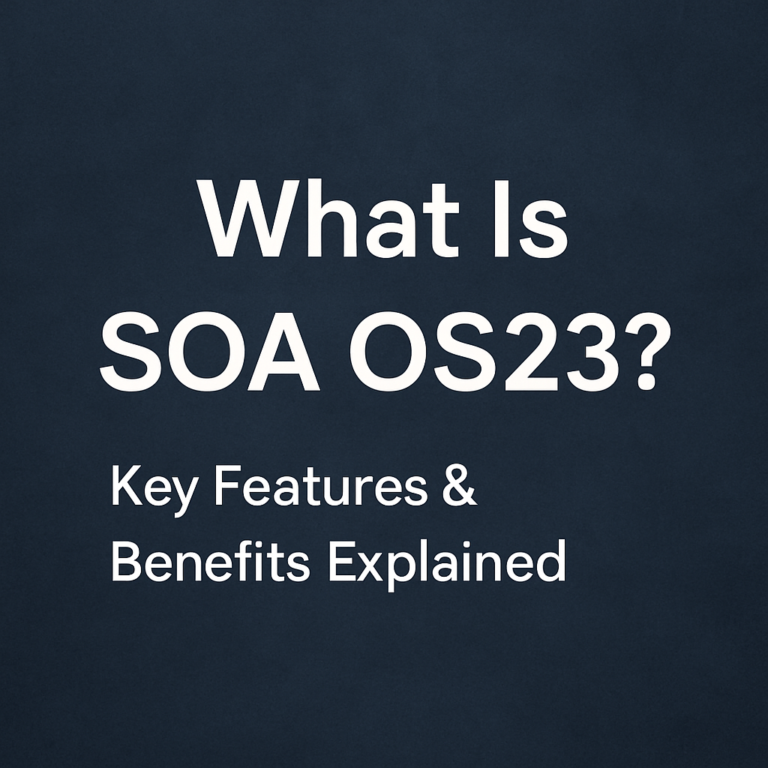
What Is SOA OS23?
SOA OS23 (Service-Oriented Architecture Operating Standard 2023) is a modern architectural framework. It updates the classical SOA principles with tools and practices fit for today’s distributed and interconnected software ecosystems.
At its core, SOA OS23 promotes modularity, service interoperability, API-based communication, and cloud-native readiness. It is not a specific software but rather a conceptual and practical guide to designing service-oriented systems in 2023 and beyond.
Core Features of SOA OS23
Modular Service Design
SOA OS23 supports breaking down large applications into smaller, independent services. Each service can be developed, deployed, and scaled independently. This ensures flexibility and simplifies maintenance.
API-Centric Integration
Services in SOA OS23 communicate using standard APIs, often RESTful or GraphQL. This enhances interoperability and allows services to integrate seamlessly with both internal and third-party systems.
Cloud-Native Compatibility
SOA OS23 is designed with cloud environments in mind. It supports containerized deployments (e.g., Docker, Kubernetes) and dynamic resource allocation, enabling scalability and fault tolerance.
Security by Design
It includes token-based authentication, HTTPS enforcement, and identity management features to ensure secure communication and data handling across services.
Real-Time Monitoring and Logging
Built-in observability is part of the architecture. Services can be monitored in real-time, helping teams identify issues quickly and ensure optimal system performance.
Benefits of SOA OS23
- Scalability: Easily scale services based on demand.
- Cost Efficiency: Optimize resource use and reduce infrastructure costs.
- Faster Deployment: Independent service updates lead to quicker releases.
- High Availability: Supports fault tolerance through redundancy and isolation.
- Future-Proofing: Built to accommodate upcoming tech innovations like AI and edge computing.
Challenges and Considerations
- Complexity in Transition: Migrating from monolithic systems to SOA OS23 requires planning and experienced teams.
- Governance Requirements: Proper management of APIs, services, and policies is essential.
- Learning Curve: Developers and operations teams may need training to align with SOA OS23 practices.
Use Cases of SOA OS23
Large Enterprise Systems
Corporations with vast internal operations benefit from the modular and scalable nature of SOA OS23.
IoT and Edge Applications
Devices and sensors in smart ecosystems can function more efficiently with lightweight, service-based interactions.
Cloud-Based SaaS Products
Startups and software companies deploying cloud-native platforms use SOA OS23 for its robust deployment and monitoring capabilities.
Conclusion
SOA OS23 marks a significant evolution in the way software systems are designed and managed. With its focus on modularity, cloud-readiness, and security, it serves as a reliable framework for building complex yet maintainable applications. Whether you’re a developer, architect, or decision-maker, understanding SOA OS23 is essential for creating scalable and future-ready systems.



